

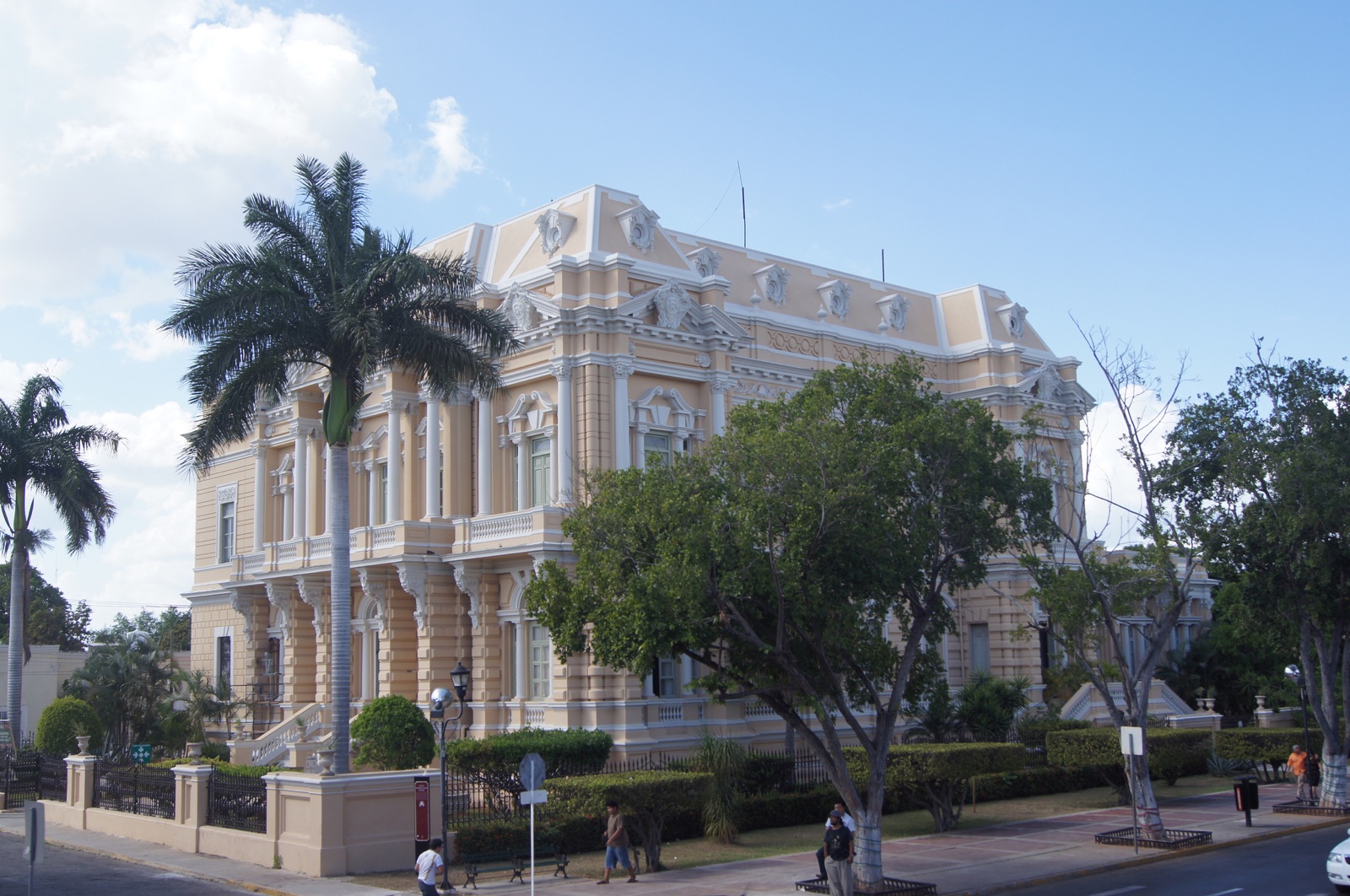
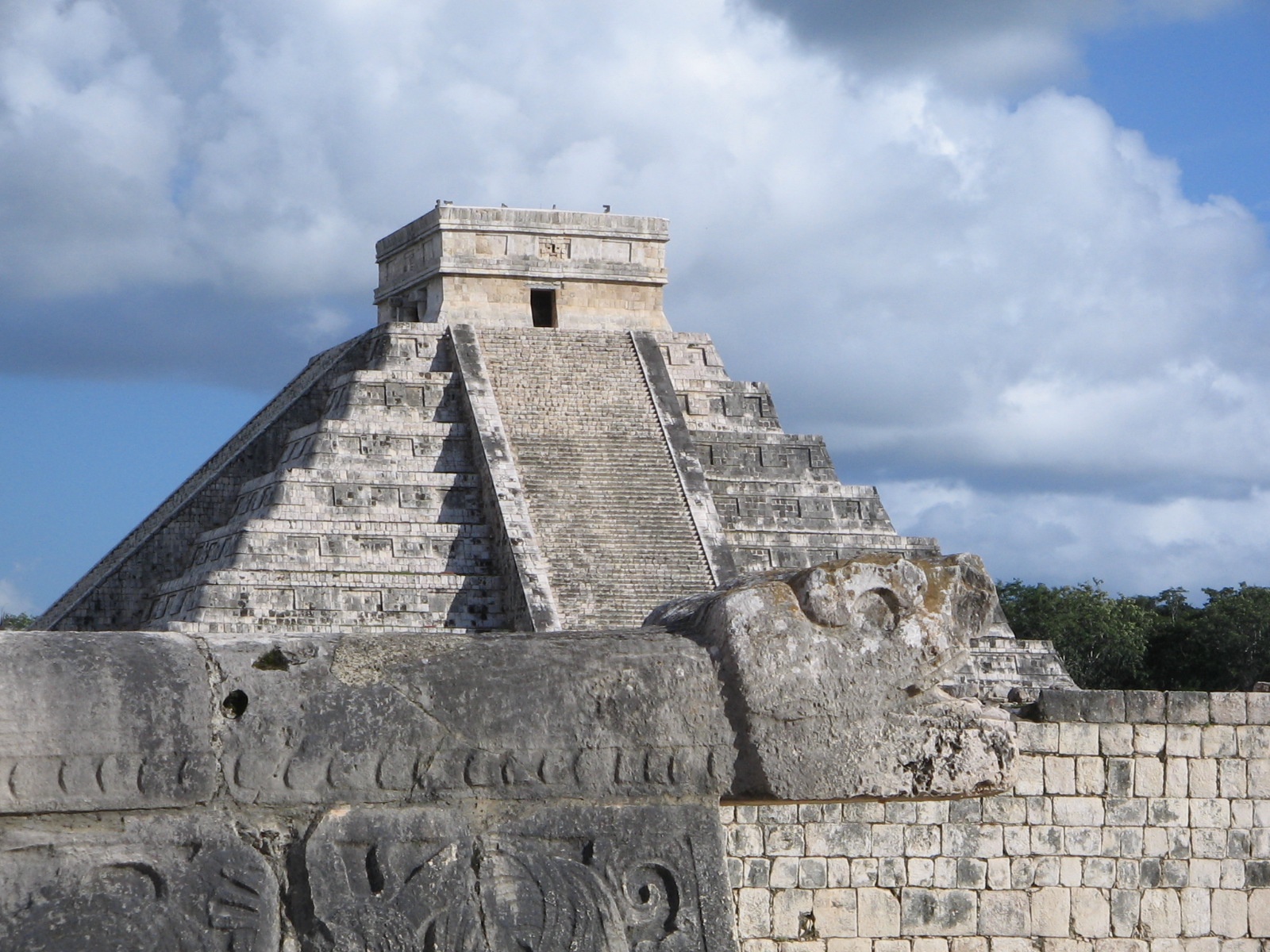
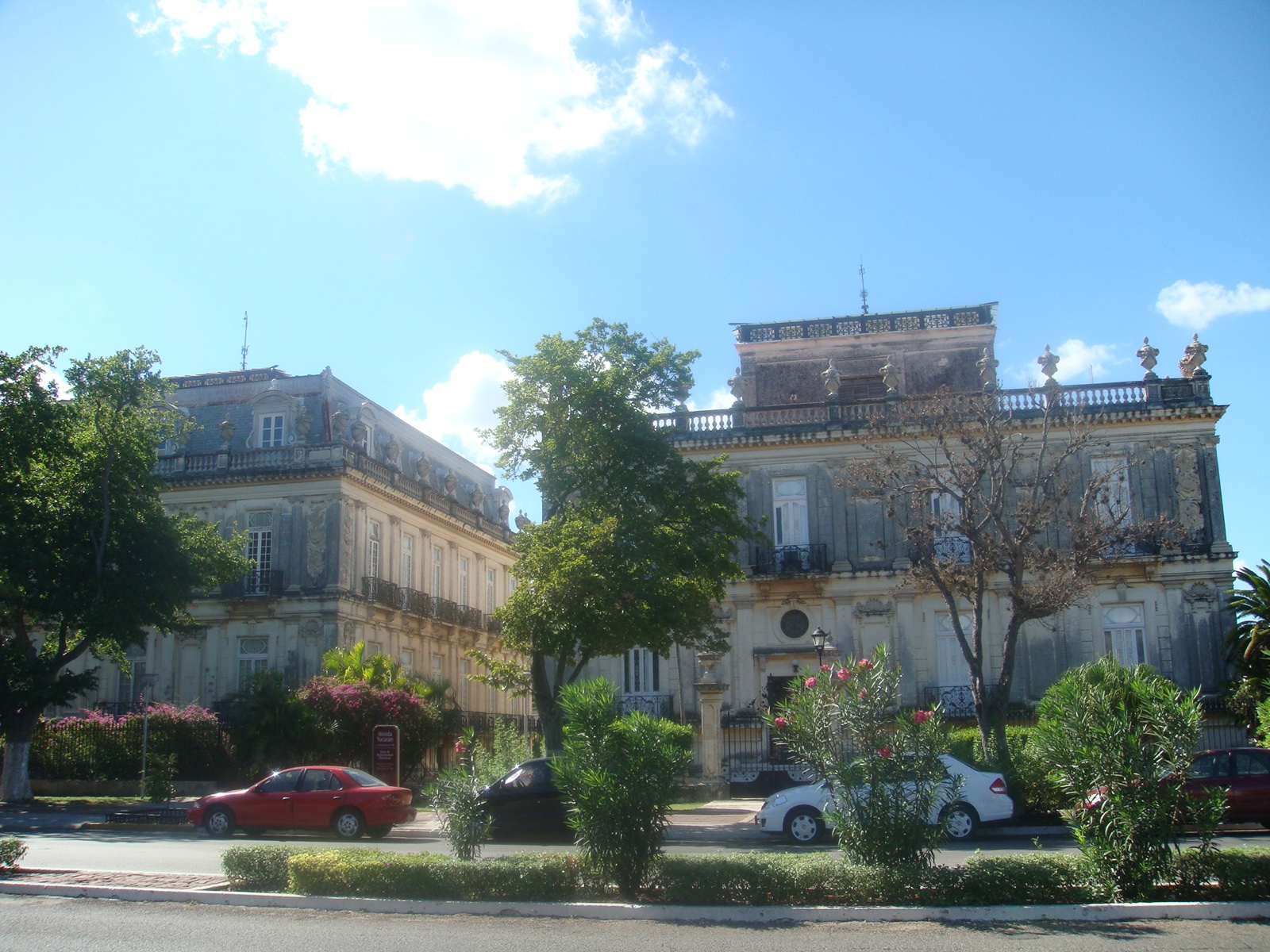


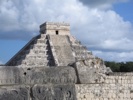
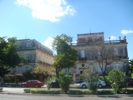
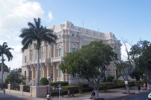

The spectacular plaza, named in modern times the Nunnery quadrangle, Uxmal It is one of the best examples of ancient terminal period architecture in Mesoamerica. It is made up of four separate buildings joined at the corners. All are long low one-story buildings with emphatic horizontality, made even more obvious by the use of Puuc ornament: plain lower walls with stone mosaic friezes carved in the upper register. It includes some eighty plus rooms. The structures were probably used as a school for the training of healers, astronomers, mathematicians, shamans and priests, and may have included housing for soldiers. This rectangular plaza is where they offer an Uxmal Light and Sound show in the evening narrating Mayan civilization stories. Uxmal was the greatest metropolitan and religious center in the Puuc hills of Yucatan during the late Classical period, flourishing between the 7th and 10th centuries A.D. Uxmal translates as 'thrice built' and, whatever the actual number, the numerous building phases are reflected in a variety of architectural styles. The city was abandoned in the 10th century after apparently coming under Toltec influence. The currently used names for many of the structures were coined by the conquering Spanish and are neither indigenous nor do they indicate the actual functions of the buildings. An example is the Nunnery so named for its similarity to the convents of the Spaniards.